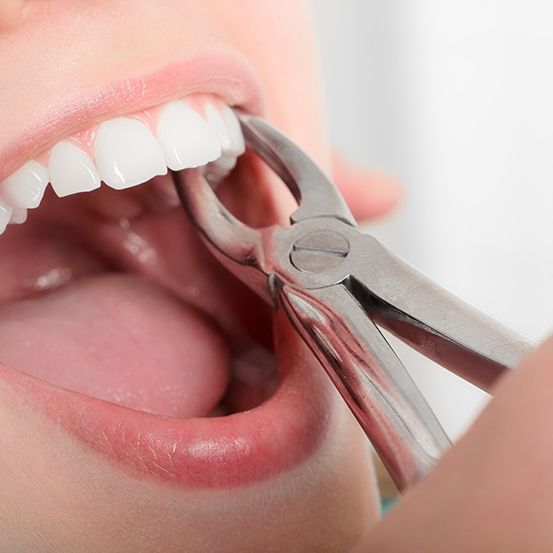Tooth Extractions – Columbus, OH
Preserve Your Smile by Pulling Problematic Teeth
Although Dr. Glamm will try to save your teeth whenever possible, sometimes if a tooth is too damaged to restore or puts your oral health at risk then it may require extraction. Our compassionate team understands that many patients feel anxious about this procedure. To set your mind at ease, we’ve put together the following information so you can better understand the process. Feel free to contact us with additional questions or to request more information!
Why Choose Glamm Dentistry for Tooth Extractions?
- Advanced Technology to Enhance Patient Comfort
- Dental Insurance Accepted & Flexible Financing Available
- Multiple Sedation Options to Alleviate Pain
Reasons Why Tooth Extractions Are Necessary

It’s safe to say that no one enjoys learning that they need to have a tooth removed, but sometimes it’s simply not feasible to keep them. You’ll first have an oral examination to determine the extent of the problem. Then if it’s necessary, we’ll recommend an extraction based on our findings. Potential reasons for having this procedure are:
- Severely decayed teeth that are no longer viable.
- Broken or damaged teeth that cannot be repaired.
- To make room for remaining teeth to grow in.
- To ensure the success of restorative treatments like dentures.
- To create space to straighten overcrowded or crooked teeth.
The Process of Removing a Tooth

Before recommending treatment, your dentist will examine your mouth and take the necessary images to diagnose the issue. In some cases, like when the problem tooth is fully erupted from your gums, a simpler approach is all that’s needed. Dr. Glamm will numb the area with an anesthetic, so you won’t feel any discomfort or pain whatsoever during the process. Then, she’ll gradually loosen the tooth using appropriate dental instruments until she can gently pull it from its socket.
If your tooth is either partially or fully covered by your gums, however, you might need a surgical extraction. This involves removing a small amount of gum or bone tissue to access your tooth. It will then be divided into more manageable sections and taken out a little at a time.
Tooth Extraction Aftercare

To heal as efficiently and quickly as possible, it’s important to follow your post-op instructions. Dr. Glamm will provide information on how to avoid infection and a complication known as dry socket. This occurs when the blood clot that forms over the extraction site is dislodged, which can be incredibly painful as well as delay your recovery. Additional directions typically include:
- Taking over-the-counter medications like Tylenol or ibuprofen to manage discomfort.
- Avoid strenuous activities that increase your heart rate and blood pressure.
- Stick with soft foods and steer clear of hard, crunchy, sticky, or spicy items.
- Drink plenty of water from a glass to keep your mouth and body sufficiently hydrated.
- Steer clear of straws; the suction can dislodge your blood clot.
- Do not smoke or chew tobacco products.
- Keep your mouth clean by carefully brushing and flossing after the first 24 hours.
